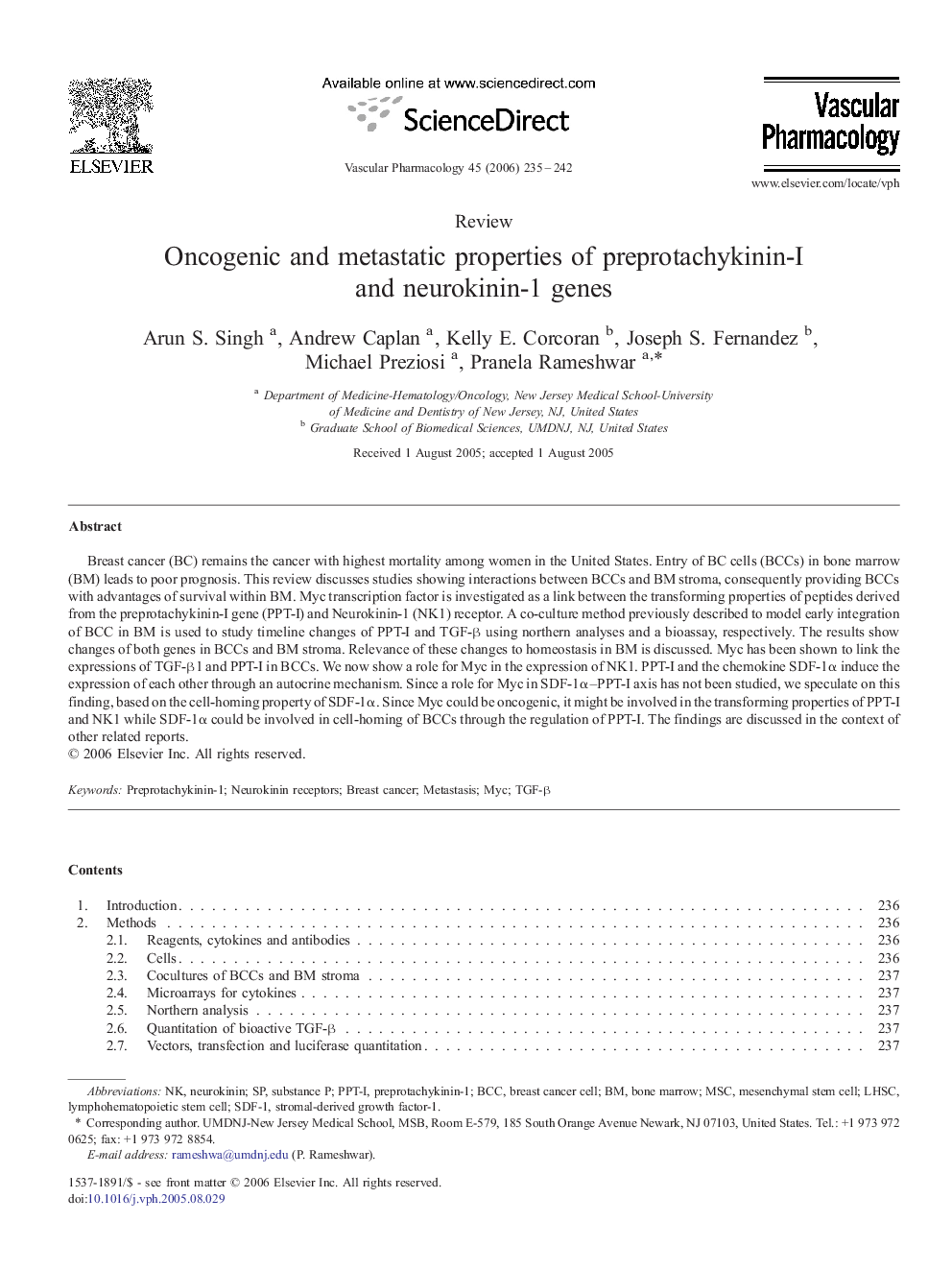| Article ID | Journal | Published Year | Pages | File Type |
|---|---|---|---|---|
| 2574671 | Vascular Pharmacology | 2006 | 8 Pages |
Breast cancer (BC) remains the cancer with highest mortality among women in the United States. Entry of BC cells (BCCs) in bone marrow (BM) leads to poor prognosis. This review discusses studies showing interactions between BCCs and BM stroma, consequently providing BCCs with advantages of survival within BM. Myc transcription factor is investigated as a link between the transforming properties of peptides derived from the preprotachykinin-I gene (PPT-I) and Neurokinin-1 (NK1) receptor. A co-culture method previously described to model early integration of BCC in BM is used to study timeline changes of PPT-I and TGF-β using northern analyses and a bioassay, respectively. The results show changes of both genes in BCCs and BM stroma. Relevance of these changes to homeostasis in BM is discussed. Myc has been shown to link the expressions of TGF-β1 and PPT-I in BCCs. We now show a role for Myc in the expression of NK1. PPT-I and the chemokine SDF-1α induce the expression of each other through an autocrine mechanism. Since a role for Myc in SDF-1α–PPT-I axis has not been studied, we speculate on this finding, based on the cell-homing property of SDF-1α. Since Myc could be oncogenic, it might be involved in the transforming properties of PPT-I and NK1 while SDF-1α could be involved in cell-homing of BCCs through the regulation of PPT-I. The findings are discussed in the context of other related reports.
